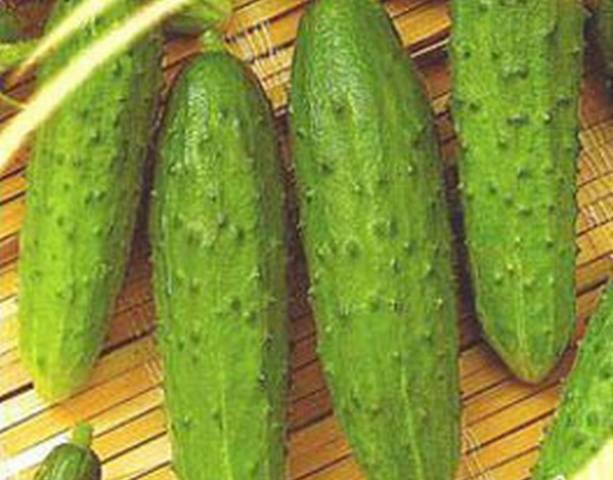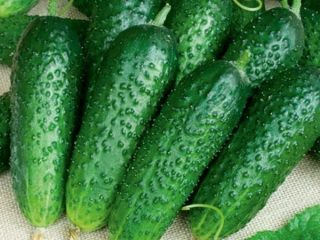Content
It is no secret that cucumber produces the best yields in closed ground conditions, that is, when grown in greenhouses or hotbeds. Yes, this requires additional costs for their device. But the result is definitely worth it.
Cucumber is the main greenhouse crop
Most gardeners are so accustomed to the commonplace and everyday nature of the cucumber that they don’t even think about its undoubted usefulness. The fruits of such a familiar product contain:
- several useful minerals (potassium, iodine, magnesium, phosphorus, calcium);
- always healthy vitamins (groups B and C);
- fiber, which will also not be superfluous;
- natural analogue of insulin;
- rare and very useful enzymes (tartronic acid).
Cucumber has the ability to satisfy hunger. This occurs due to the fact that the amount of food eaten leads to stretching of the stomach walls, resulting in a feeling of fullness. The liquid, which makes up 95% of the cucumber, is an excellent natural absorbent.With constant and frequent consumption of cucumber fruits, it will allow the human body to cleanse itself of harmful pollutants and toxins.
The advantages of cucumbers can be listed for a long time.
But two of them are worth highlighting:
- improves digestion, helps with cardiovascular problems, as well as common diseases such as hypertension and arthritis;
- normalizes various types of balance in the human body: both water-salt and acid-base.
Stages of growing cucumbers indoors
In order to obtain a high yield of cucumbers indoors, it is necessary to carefully and consistently complete all the necessary stages of growing the plant.
Soil preparation
Any varieties of cucumber, even the best, are quite demanding on the soil, especially on the soil of a greenhouse or greenhouse. Therefore, preparation must begin long before the actual landing. Soil requirements:
- high soil fertility;
- neutral reaction, or close to it;
- sufficient ability of the soil to pass and absorb moisture and oxygen.
Most qualified specialists believe that the best conditions for any variety of cucumbers in a greenhouse are created by a two-component mixture of humus and ordinary turf soil. The following composition is often taken:
- peat (approximately 50%);
- humus (about 30%);
- field soil (remaining 20%),
It is also allowed to add sawdust to the soil (necessarily from coniferous tree species) in a ratio of 1 to 1.
The sequence of operations when preparing the soil for planting cucumbers:
- cleaning the soil from plant residues;
- digging up the soil (depth approximately 20-25 cm);
- soil disinfection using a solution of copper sulfate (7 percent);
- 30 days after the treatment - prepare the mixture and enrich it (the dosage and recipe is as follows: ammonium nitrate/superphosphate/potassium sulfate, respectively 0.4 kg/3 kg/2 kg per 1 cubic meter of soil mixture).
It is believed that the best conditions for the growth of cucumbers in closed ground are created when they are grown in ridges or ridges with a width of approximately 1 m and a height of 0.25 m. The ridges are arranged as follows. First, a pit is dug 0.4 m deep. Then warm manure is placed in it. From above it is covered with a layer of soil mixture 0.14-0.16 m thick.
Landing
When growing cucumbers indoors, as a rule, only and exclusively the seedling method is used, but not seeds. It allows you to shorten the onset of fruiting compared to the case when cucumber seeds are used.
Most often, when planting cucumbers in a greenhouse or greenhouse, 25-day seedlings are used. Planting occurs with a tape in two lines. The recommended distance between adjacent rows of cucumbers is 0.5-0.6 m, between adjacent ribbons of plants - 0.8 m, between adjacent plants in the same row - 0.2 m.
The linearity of the rows and ridges is maintained using a cord; a regular scoop is used to form holes for planting. After digging a hole, an organomineral mixture is placed in it, then watered abundantly. Then the pot with cucumber seedlings is immersed in the resulting dirt and covered with soil. After all the operations carried out, mulching is performed, the purpose of which is to prevent the evaporation of moisture from the soil and the formation of a crust on its surface.
Features of care
You should not think that since cucumbers are grown in greenhouse conditions that are comfortable for them, the need for care will be eliminated. On the contrary, only careful and regular care of the plant will allow you to achieve a high yield, even if the best varieties of cucumbers are used. The main actions are:
- regular watering of cucumbers. Warm water is used. In winter, it is necessary to water growing plants in the morning after sunrise. In the warm season, plants are usually watered twice a week, and in sunny weather - watering every other day creates the best conditions;
- careful and shallow loosening of the soil. This must be done with extreme caution so as not to damage the root system of the cucumbers, located close to the surface. The purpose of the event is to increase and maintain soil air permeability at the proper level, as well as to prevent root rot;
- regular ventilation of the greenhouse. This type of care must be constantly performed; after the onset of consistently warm weather, it is recommended to leave the greenhouse ventilated for the whole day;
- plant nutrition. For these purposes, a slightly fermented infusion of mullein or chicken manure is usually used. The use of nettle and other weeds is allowed. In addition to organic matter, it is also recommended to use mineral fertilizers specially designed for pumpkin crops to feed cucumbers grown indoors. The number of such plant feedings should not exceed 5 per season. In the case of predominance of sandy soils, it is necessary to additionally apply nitrogen fertilizers, which are standard in such cases; for floodplain soils, potassium fertilizers should be applied, respectively.
Popular varieties of cucumbers for indoor soil
Based on the growing conditions of plants, self-pollinating and parthenocarpic varieties of cucumbers are most suitable for indoor soils. This is quite logical, since when using insect-pollinated cucumbers, additional measures will be required to attract pollinating insects. Self-pollinating cucumbers are those varieties that have flowers that combine the properties of both sexes, which leads to self-pollination. Self-pollinating plant varieties differ from parthenocarpic varieties, which have female flowers that do not require pollination. Therefore, the latter do not have seeds.
However, it is not worthwhile to completely abandon the varieties and hybrids of cucumbers that require bees for pollination, since some of them have quite attractive properties and characteristics for which it is quite possible to spend additional labor.
Cucumber hybrid Emelya F1
A universal hybrid, perfect for salads and pickling. It was bred specifically for growing cucumbers in closed soils of greenhouses or greenhouses. The first cucumbers can be harvested already on the 39-40th day. The high productivity of the plant is ensured by an unlimited number of vines formed in the plant and fairly large fruits: the cucumber reaches 13-15 cm in length and weighs up to 150 g. It belongs to the group of self-pollinating varieties of cucumbers, that is, there is no need for additional pollination by bees.
Hybrid cucumber Dynamite F1
Universal hybrid. Plants of this variety are self-pollinating and do not require pollination by insects. Ideal for indoor conditions, especially if sufficient space is provided for it. It has the classic dark green color of cucumbers with characteristic tubercles, located quite often.The fruit has a regular cylindrical shape and a relatively small size: length – 12-14 cm, weight – 100-120 g.
Hybrid cucumber Annushka F1
Bee-pollinated mid-season hybrid. The main advantages of the cucumber variety are its ability to resist diseases and stable yield. The plant has medium-sized leaves with a characteristic green color. The fruits of the hybrid are not very large - 10 cm long, weighing 90-110 g. The shape and color are traditional for cucumbers: dark green, with medium-sized tubercles.
Hybrid cucumber Hercules F1
Late-ripening hybrid of cucumbers for closed ground. Has high productivity. It has quite large fruits weighing up to 150-170 g. The shape of the cucumbers is spindle-shaped. Mixed flowering. The main disadvantage of the variety is the need for pollination by bees, since the cucumber is not a self-pollinating species. However, it can be completely replaced by artificial pollination, performed manually. High taste and excellent yield are clearly worth putting in some additional labor.
Hybrid cucumber Granddaughter F1
An early-ripening hybrid with large fruits (up to 18-20 cm in length and a fruit weight of 130-140 g). The plant does not form seeds, since the inflorescences are predominantly female and are self-pollinating. It is quite widely known; seeds for seedlings are sold everywhere.
Hybrid cucumber Herman F1
The hybrid was bred specifically for closed ground. Cucumber flowers are self-pollinating; as a rule, there are no seeds in the fruit. The high yield of cucumbers of this hybrid is combined with resistance to major diseases. The seeds of the plant are shown in the photo.
Conclusion
Growing cucumbers indoors is quite a labor-intensive, but interesting activity.With proper and competent management, the invested efforts will pay off many times over in the form of a wonderful harvest that can please household members and visiting guests.
















